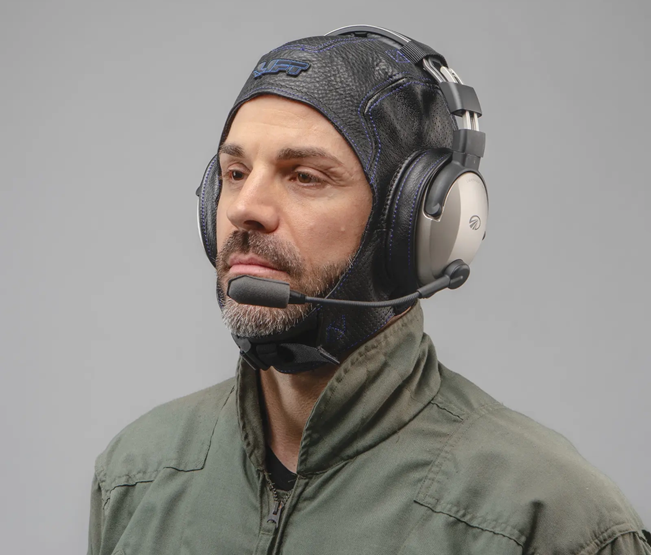Every profession demands the right attire for one to look the part. Chefs rely on aprons to stay protected in the kitchen, warehouse staff count on durable workwear to stay safe on the job, and pilots need appropriate aviation clothing and eyewear to perform safely and maintain a professional appearance in the cockpit.
From the earliest days of aviation, pilots have always needed some form of personal protection against the elements. Remember Amelia Earhart, the pioneering aviator who took to the skies in the early days of flight? Her iconic leather jacket, scarf, gloves, and goggles were the essentials back then when open cockpits exposed aviators to wind and cold.
Nowadays, aircraft apparel has taken flight in a whole new direction. Gone are the days when leather jackets, scarves, gloves, and goggles were the main line of defence. Although the style has evolved and new, advanced materials have replaced the old, the principle remains the same. Modern pilots still need aircraft apparel and accessories that can perform under pressure and offer protection, comfort, and functionality when taking to the skies.
Let’s go through some essential pieces that make this possible.
Headwear

Aviator headwear has always been a signature element of a pilot’s outfit. Today, modern pilot caps have evolved from the leather helmets with ear flaps and chin straps to sleek, lightweight, advanced styles designed for comfort and durability in pressurised cockpits rather than open-air exposure.
Contemporary pilot caps are made from a variety of materials, including cotton, polyester, and microfibre. Many of the aviation flight caps for sale also come with built-in ventilation, moisture-wicking linings, reflective piping for safety, adjustable fasteners, and are compatible with headsets.
Casual pilot caps made from cotton or microfibre are also a popular style when flying in modern pressurised cockpits with climate control. These caps are lightweight, breathable, and designed to be comfortable under headsets because there is no disturbing button on the top.
Eyewear
Obviously, pilots rely on their eyes for flying an aircraft, including glancing outside for traffic and inspecting the instruments, tablets, and charts in the cabin. This makes quality sunglasses another important accessory in a pilot’s look. But aviation sunglasses aren’t your regular pair. They’re designed specifically for the demands of flying.
Unlike early aviators who relied on goggles made from leather and fur-lined materials to protect against wind and cold in an open cockpit, contemporary pilot eyewear combines advanced materials, precision optics, and lightweight frames.
Aviation eyewear evolved into the iconic aviator sunglasses we know today with a teardrop shape and metal frames that are both lightweight and durable. These frames are often paired lenses that offer 100% UV protection and optically accurate vision, ensuring pilots have clear and precise sight during flight. Furthermore, aviation sunglasses have non-polarising lenses to help you see readings from the instruments that have anti-glare filters.
There are many options for pilot sunglasses, but when you are looking for ones, make sure you get the perfect fit. Your aviation sunglasses shouldn’t cause bruises around your nose or fall off your face. This said, when buying sunglasses, check if they are advertised as aviation sunglasses, as these have unique features.
Clothing
Shirts
A well-fitted shirt is the foundation of a pilot’s look. button-up shirts in neutral colours like white, blue, or light grey will keep you looking sharp and professional. These garments may include epaulets, chest pockets, and subtle stretch for comfort in the cockpit and are often made from breathable, wrinkle-resistant, and moisture-wicking blends.
Tees
While traditional button-up shirts are a staple for commercial pilots and formal occasions, the modern aviator’s wardrobe can also include more relaxed options like polo-style shirts. These shirts offer a smart-casual look. Unlike traditional button-up shirts, they feature a soft, knit collar and a short button placket at the neck, allowing for ease of movement and ventilation.
Material-wise, most polo-style pilot shirts are often a mix of polyester and cotton. Cotton is a favourite, given its breathability and comfort, while the addition of polyester enhances durability, adds wrinkle-resistance, and provides moisture-wicking properties.
Jackets
It’s safe to say that early aviators were defined by their iconic leather jackets with high collars, snap closures, and pockets for maps and goggles. Bomber jackets, originally known as “flight jackets”, were created to keep pilots warm in the uninsulated, open-air cockpits of the early fighter planes.
Nowadays, we can see a variety of modern takes on this classic pilot jacket. However, most bomber jackets today maintain many of the elements that made them so memorable in the first place, like a cropped length, looser arms and shoulders, ribbed collars, waistbands and cuffed sleeves.
These are usually made from lightweight, weather-resistant fabrics, quilted linings, and ergonomic features for ultimate comfort and mobility.
























